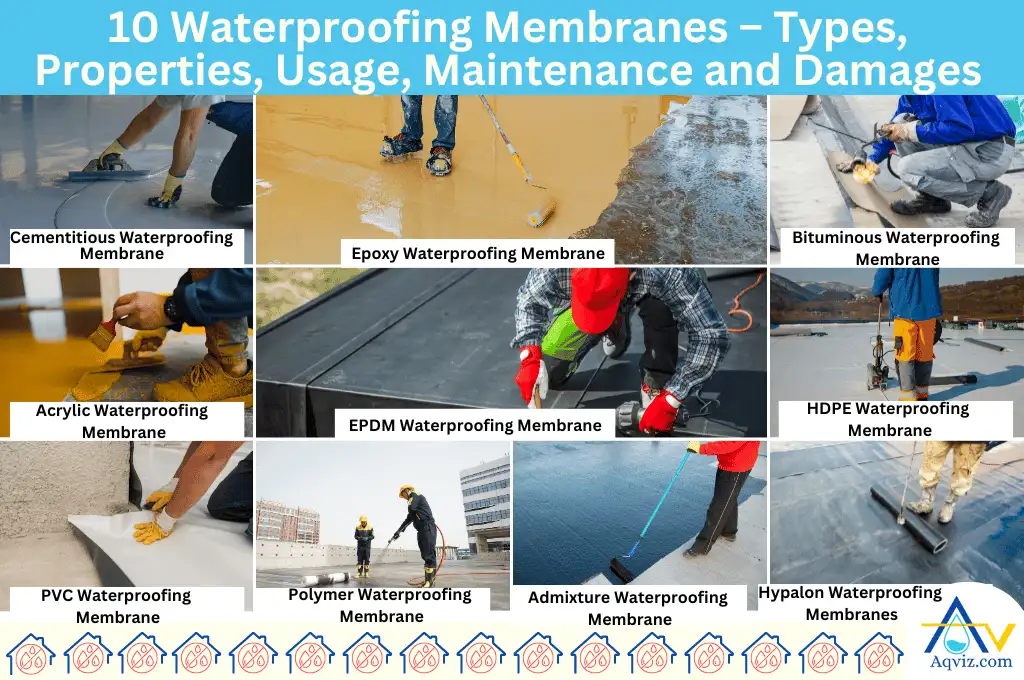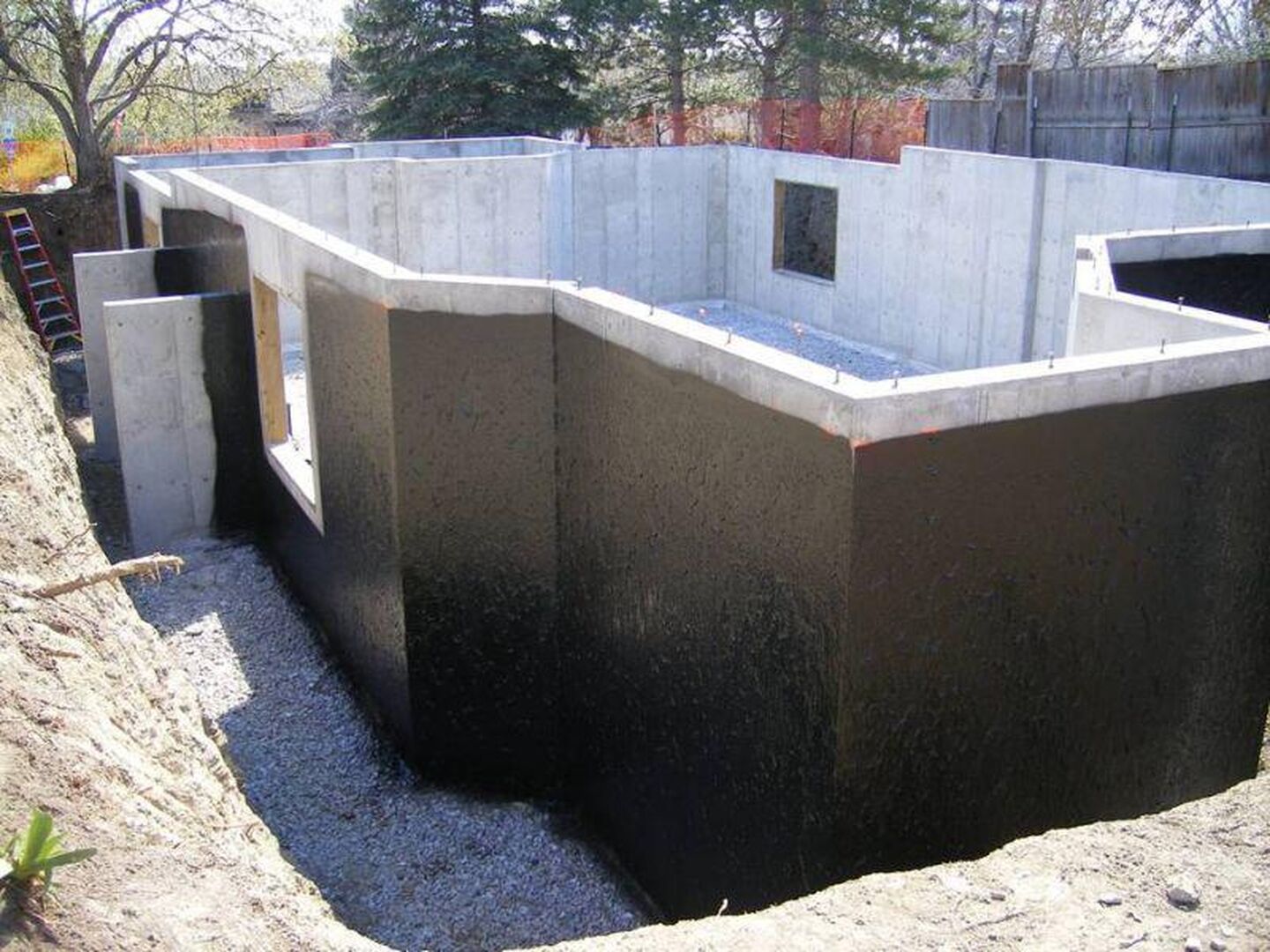Sorts of Waterproofing: Checking Out the Numerous Methods and Their Applications
Waterproofing is a vital element of building and upkeep. It secures structures from the damaging results of water damages. There are numerous approaches available, each with its unique applications and benefits. From membrane layer systems to cementitious solutions, comprehending these alternatives is important for reliable execution. The selection of waterproofing technique can considerably affect longevity and longevity. Exploring these different strategies exposes their distinctive benefits and possible difficulties, prompting more consideration of suitable options.
Membrane Layer Waterproofing Systems
Membrane layer waterproofing systems serve as an essential barrier against water invasion in various structures. These systems normally contain slim sheets made from products like rubber, thermoplastic, or asphalt, which are used to surface areas to avoid dampness penetration. They can be set up over or below quality and are particularly reliable in locations vulnerable to high water exposure, such as cellars, roof coverings, and foundations.The installation procedure includes cleaning the substrate, applying adhesives or primers, and specifically fitting the membrane layer to assure full protection. Membrane layer systems can be either completely stuck, mechanically connected, or laid loose, depending upon the details needs of the task. They provide sturdiness and versatility, accommodating architectural activities without compromising their waterproofing capacities. Moreover, these systems can be reinforced with extra layers for enhanced protection. Ultimately, membrane layer waterproofing systems are necessary for safeguarding structures against water damages and maintaining long-lasting honesty.
Liquid-Applied Waterproofing Coatings
Liquid-applied waterproofing finishings offer a versatile service for securing surface areas from water infiltration - Foundation waterproofing Omaha. These layers include fluid products that, when used, create a seamless, adaptable membrane. Their adaptability allows for application on different substratums, including concrete, metal, and wood. The finishings can be utilized in varied atmospheres, from residential to industrial settings, making them suitable for roofs, foundations, and below-grade structures.One substantial benefit of liquid-applied coatings is their capacity to adapt to uneven forms and permeate cracks, developing a durable obstacle against wetness. They typically exhibit outstanding bond residential properties and resistance to UV radiation, ensuring longevity and toughness. Furthermore, the application process is normally uncomplicated, allowing for quick setup and decreased labor costs. This approach additionally reduces the risk of water pooling, as the continual layer properly guides water away from at risk locations. Generally, liquid-applied waterproofing coverings are a reliable selection for extensive water security
Cementitious Waterproofing Solutions

Cementitious waterproofing solutions offer a durable choice for frameworks requiring dependable moisture protection. These systems largely make use of a mix of concrete, sand, and chemical ingredients to develop a water-proof obstacle. They are frequently used to surface areas such as concrete walls, structures, and floors, supplying a durable, resilient protection against water intrusion.One of the essential advantages of cementitious waterproofing is its convenience of application; it can be used using a brush, roller, or spray, making it ideal for numerous task dimensions. Furthermore, this technique works with several surfaces and can often be made use of combined with other waterproofing techniques.Cementitious remedies are especially effective in settings where water exposure is an issue, such as basements or below-grade frameworks. Their exceptional bond residential or commercial properties ensure that they bond well with substrates, giving a strong and impenetrable layer against wetness penetration.
Bentonite Waterproofing
Bentonite waterproofing is an extremely efficient technique that uses salt bentonite clay to create a natural barrier against water. This strategy manipulates the special properties of bentonite, which increases upon contact with water, securing any kind of potential leakages and protecting against dampness infiltration. It is commonly used in different applications, including foundation wall surfaces, tunnels, and maintaining wall surfaces, where water resistance is essential.Bentonite can be applied in a number of kinds, such as panels or coverings, giving adaptability in setup. Its capacity to self-seal makes it an appealing choice for areas based on shifting soil or fluctuating water degrees. In addition, bentonite waterproofing is eco-friendly, as it is a natural product that does not present damaging chemicals right into the surroundings.
Drain and External Waterproofing Solutions
Efficient waterproofing typically involves a combination of strategies, consisting of drain and external systems. Drain systems, such as French drains pipes and sump pumps, are designed to redirect water away from structures, minimizing hydrostatic pressure versus foundations. These systems are vital in avoiding water accumulation water proof ply that can result in architectural damages and mold and mildew growth.External waterproofing, on the other hand, involves using protective barriers to the building's outside. Techniques such as the setup of water-proof membrane layers, finishes, or sealants can help avoid water infiltration. This method not only protects the foundation however likewise improves the total sturdiness of the structure.Together, water drainage and outside waterproofing systems create a complete remedy to manage water properly. By applying these methods, building owners can guard their investments versus the harmful useful source impacts of wetness, guaranteeing lasting security and safety for their structures.
Regularly Asked Concerns
Just how Do I Pick the Right Waterproofing Approach for My Project?
Picking the appropriate waterproofing method depends on factors such as task kind, environmental problems, budget plan, and preferred durability. Evaluating these elements permits educated choices tailored to certain demands and demands.

Can Waterproofing Be Applied in Cold Climate Conditions?
Waterproofing can be applied in chilly climate conditions, yet it calls for particular products and strategies. Cold temperatures may affect healing times and bond, requiring careful choice of products made for low-temperature application.
What Are the Typical Signs of Waterproofing Failure?
Common indications of waterproofing failure consist of visible water spots, peeling off paint, moist odors, mold and mildew development, and fractures in wall surfaces or foundations. Water Solutions Omaha. These indications recommend that wetness is passing through the obstacle, endangering its performance
How Much Time Does Waterproofing Last Before Requiring Maintenance?
The durability of waterproofing varies, typically lasting in between 5 to ten years. Variables such as material quality, ecological problems, and upkeep practices influence its longevity, necessitating regular inspections to assure reliable protection against water invasion.
Are There Eco-Friendly Waterproofing Options Available?
The inquiry of environment-friendly waterproofing choices exposes an expanding interest in lasting materials (Basement waterproofing Omaha). Various all-natural materials, such as plant-based sealers and recycled products, supply effective remedies while lessening ecological influence, appealing Recommended Site to environmentally mindful consumers